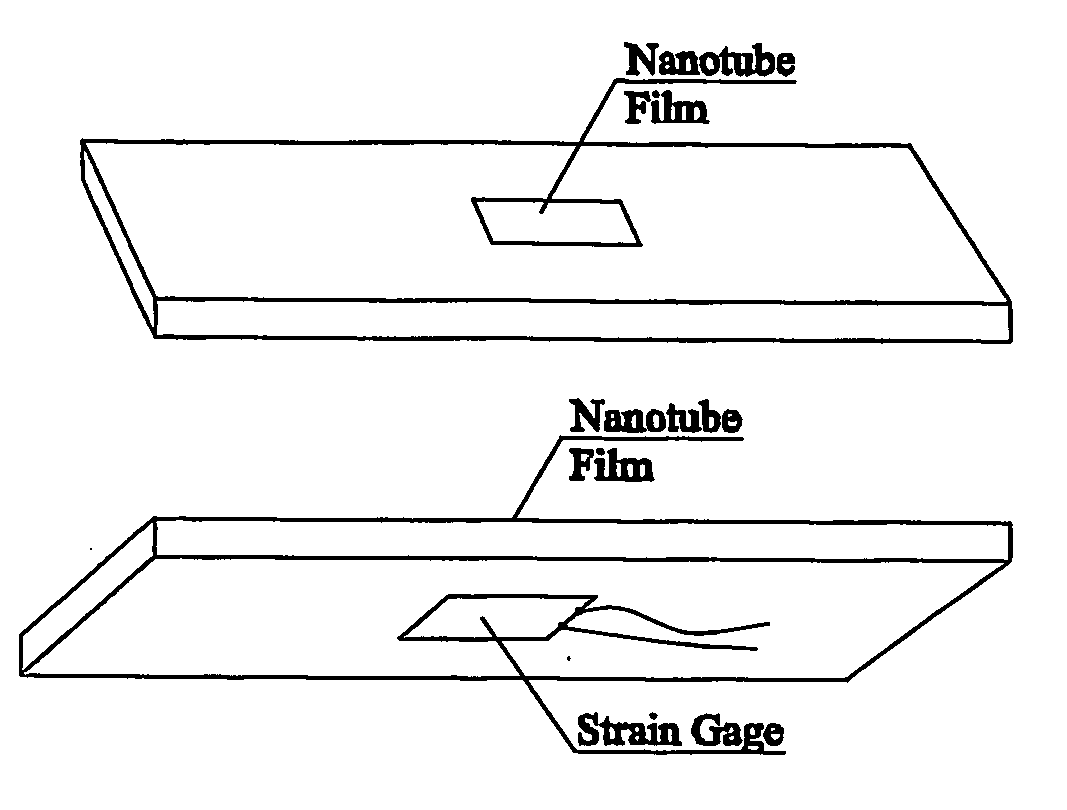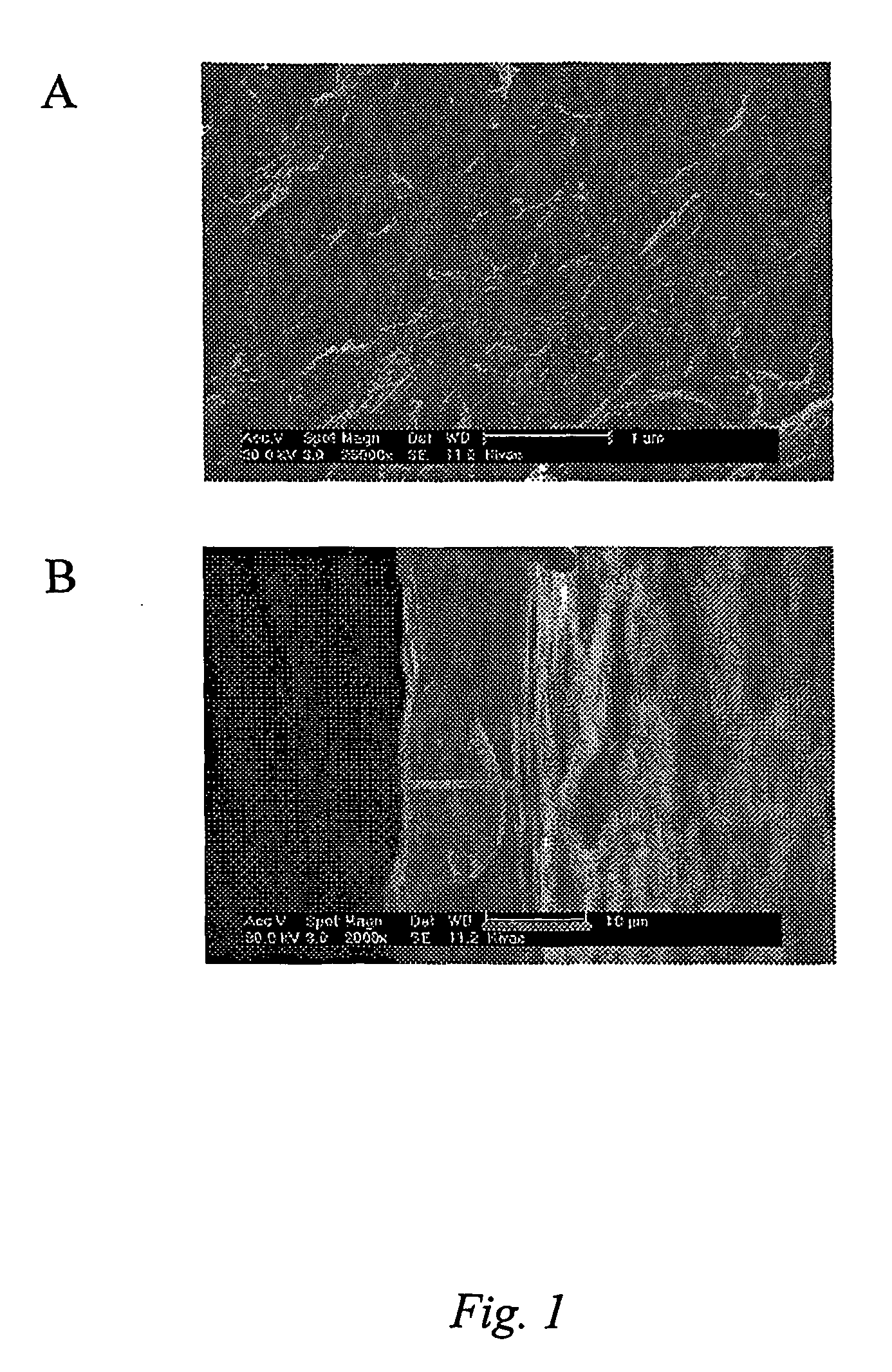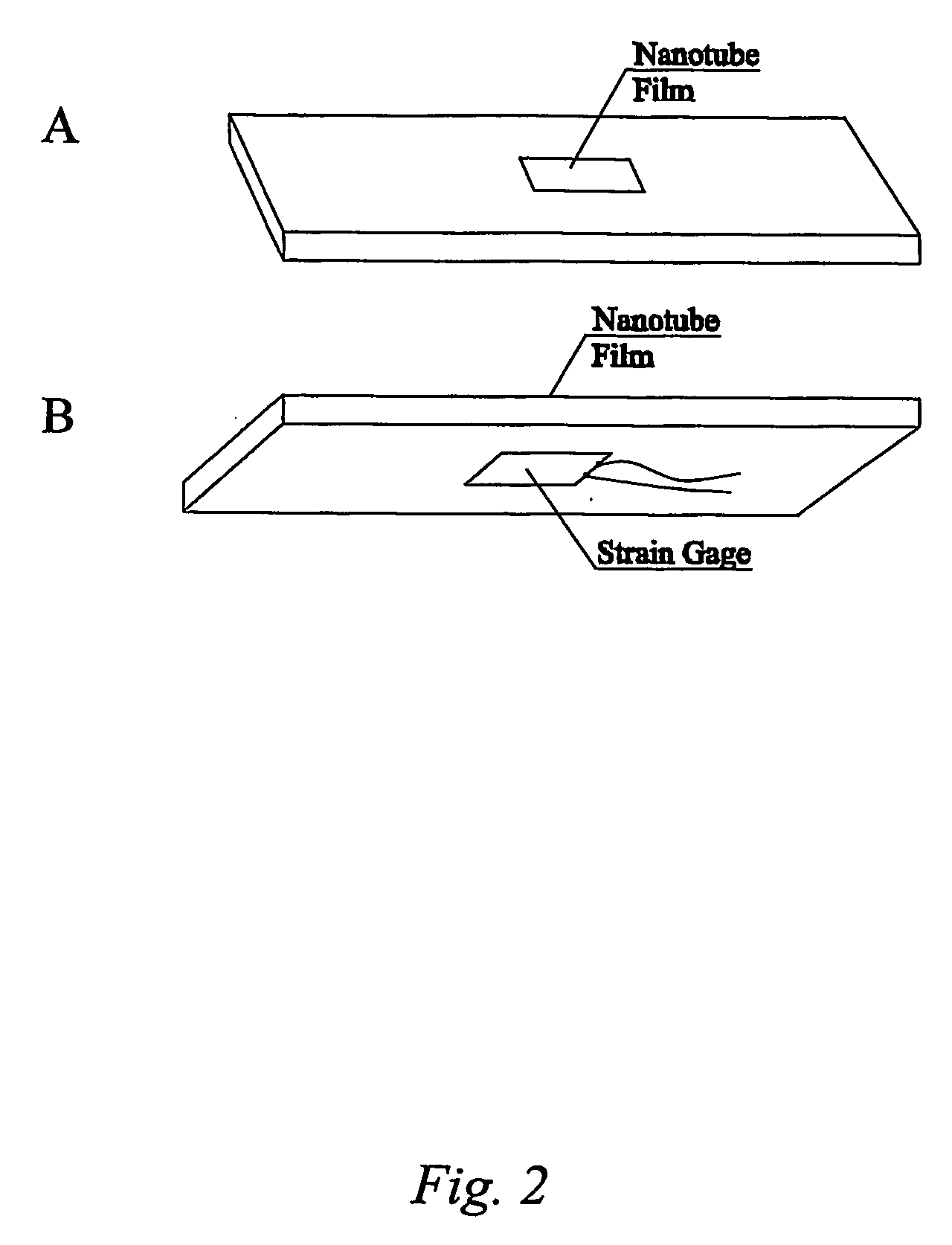Smart materials: strain sensing and stress determination by means of nanotube sensing systems, composites, and devices
- Summary
- Abstract
- Description
- Claims
- Application Information
AI Technical Summary
Benefits of technology
Problems solved by technology
Method used
Image
Examples
example 1
[0062] This Example serves to illustrate embodiments of the present invention in which add-on sensors comprising a film (i.e., “buckypaper”) are used to sense stress and strain. The results put forth in the present Example can be found in a forthcoming publication by Applicants. See Dharap et al., “Nanotube film based on single-wall carbon nanotubes for strain sensing,” Nanotechnology, 15(3), pp. 379-382 (2004).
[0063] A carbon nanotube film is produced by mixing unpurified SWNTs (obtained from Carbon Nanotechnologies, Inc.) with 0.25 mg / mL N,N-Dimethylformamide (DMF). The mixture is filtered by a 0.2 mm Teflon membrane and dried. The film (buckypaper) is peeled from the filter after drying. Then the film is further dried for 24 hours under vacuum and heat. FIG. 1(a) shows a scanning electron microscope (SEM) image of the carbon nanotube film where it can be seen that the film is composed of mechanically entangled, randomly oriented nanotube bundles that impart it with isotropic ele...
example 2
[0069] This Example serves to illustrate how carbon nanotube sensing elements can be incorporated into layered materials like laminates to sense mechanical conditions in multiple directions.
[0070] Referring to FIG. 5a (FIG. 5b shows an exploded view), a film 501 comprising carbon nanotubes aligned in one direction is laminated to a film 503 comprising carbon nanotubes oriented in a direction different from that in film 501. Such lamination may comprise an additional laminating agent 502. The films comprising the aligned carbon nanotubes also comprise mylar, although the carbon nanotubes could be used by themselves or with another material. In this particular Example, however, the carbon nanotubes were aligned in the mylar via an extrusion process whereby a blend, comprising about 20 wt. % carbon nanotubes in mylar, is extruded through a sheet extruder. The extrusion process aligns the nanotubes in the direction of the extrusion. A second sheet is fabricated and the two sheets are l...
example 3
[0072] This Example serves to illustrate how carbon nanotube sensing elements can be incorporated into airplane wings (or other parts of the airplane) to serve as indicators of potential structural failure. Such sensors can be potentially useful in detecting damage after lightning strikes an aircraft.
[0073] Referring to FIG. 6, carbon nanotubes 602 (not drawn to scale) can be isotropically distributed throughout a coating on an airplane's wing 600 (or tail, fuselage, etc.). Attached to this coating are electrodes 601 that can be used to sense changes in electrical properties throughout this coating.
PUM
 Login to View More
Login to View More Abstract
Description
Claims
Application Information
 Login to View More
Login to View More - R&D
- Intellectual Property
- Life Sciences
- Materials
- Tech Scout
- Unparalleled Data Quality
- Higher Quality Content
- 60% Fewer Hallucinations
Browse by: Latest US Patents, China's latest patents, Technical Efficacy Thesaurus, Application Domain, Technology Topic, Popular Technical Reports.
© 2025 PatSnap. All rights reserved.Legal|Privacy policy|Modern Slavery Act Transparency Statement|Sitemap|About US| Contact US: help@patsnap.com



